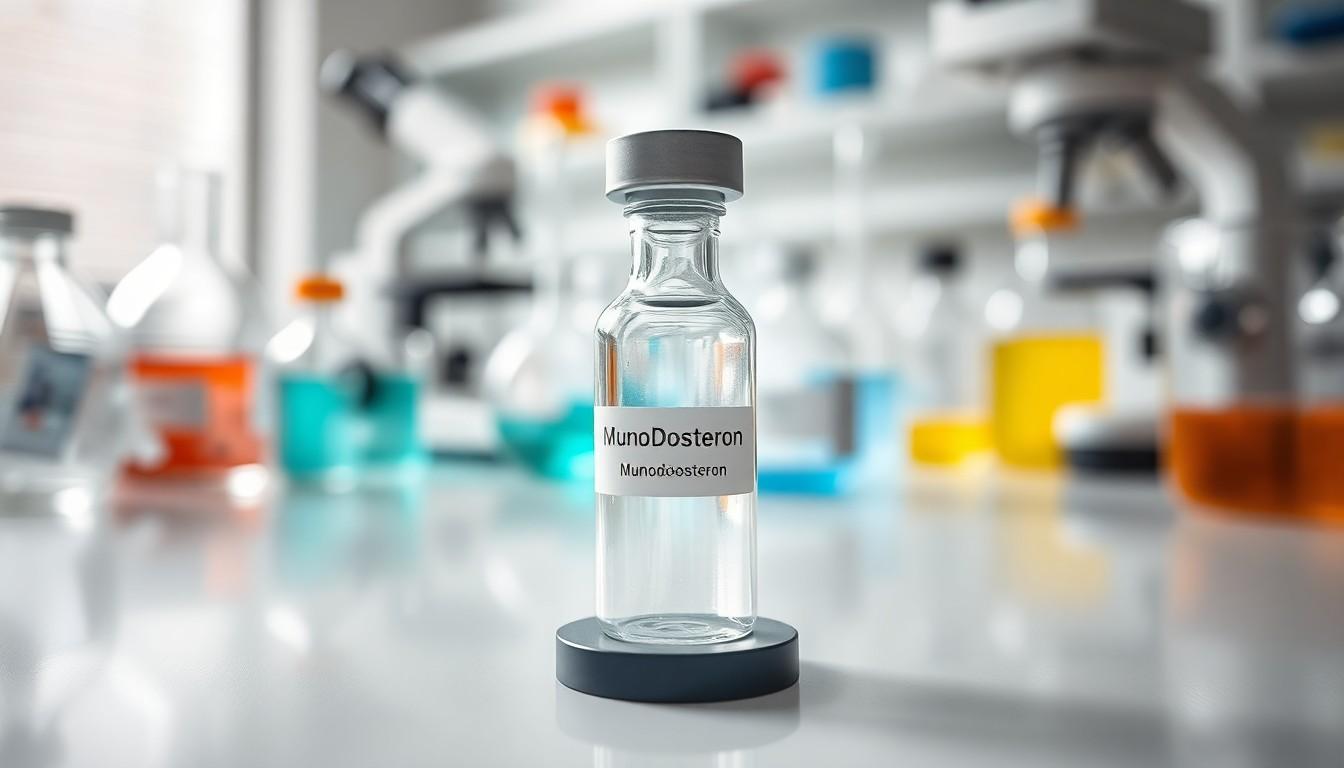In the world of pharmaceuticals, munodedosteron is making waves, and not just because it’s a mouthful to pronounce. This intriguing compound is capturing the attention of scientists and health enthusiasts alike, promising a new frontier in medical treatments. Imagine a world where ailments are tackled with precision and efficacy—sounds like a sci-fi movie, right? Well, welcome to the future!
But what exactly is munodedosteron, and why should anyone care? It’s not just another fancy name thrown around in lab coats. This compound holds the potential to revolutionize therapies, making it a hot topic in both clinical circles and beyond. So buckle up as we dive into the fascinating realm of munodedosteron, where science meets possibility and maybe—just maybe—a sprinkle of humor along the way.
Overview of Munodedosteron
Munodedosteron is a promising pharmaceutical compound gaining significant attention for its potential to revolutionize medical treatments. Its significance in the medical field lies in its ability to pave the way for more precise and effective therapies.
Chemical Structure
Munodedosteron consists of a steroid backbone, characterized by its core structure of four fused carbon rings. The compound exhibits specific functional groups that enhance its biological activity. These functional groups include hydroxyl and carbonyl groups, which contribute to the compound’s pharmacological properties. The distinct structure enables selective binding to particular receptors, making it effective in targeted therapies. Additionally, researchers have noted that the molecular weight of munodedosteron is approximately 330.47 g/mol.
Mechanism of Action
Munodedosteron operates primarily through its interaction with mineralocorticoid receptors. Binding to these receptors triggers downstream signaling pathways that regulate various physiological processes. Modulating gene expression plays a key role in its effectiveness, affecting processes such as electrolyte balance and fluid retention. As a result, munodedosteron can influence blood pressure regulation and cardiovascular health. Furthermore, studies show that its selective action helps minimize side effects compared to traditional therapies, highlighting its potential benefit in treatment regimens.
Clinical Applications

Munodedosteron showcases various clinical applications, particularly in hormonal disorders and performance enhancement.
Hormonal Disorders
Munodedosteron plays a significant role in treating hormonal disorders. Unbalanced hormone levels can lead to conditions such as adrenal insufficiency or primary hyperaldosteronism. In these cases, munodedosteron acts on mineralocorticoid receptors to restore hormonal balance and regulate sodium and potassium levels. Patients experiencing symptoms like fatigue or high blood pressure often benefit from its targeted action. Clinicians have noted its effectiveness in managing electrolyte disturbances, exemplifying a reliable therapeutic option.
Performance Enhancement
Athletes increasingly consider munodedosteron for its performance-enhancing properties. It promotes muscle strength and endurance through its anabolic effects. Many professional sports organizations closely monitor its use due to potential advantages in competitive settings. Practitioners emphasize the importance of medical supervision when using munodedosteron, especially given its regulatory implications in professional sports. Safe and responsible usage can lead to improved athletic performance while minimizing adverse effects often associated with traditional anabolic steroids.
Efficacy and Safety
Efficacy and safety are crucial aspects of munodedosteron’s profile, influencing its acceptance in medical practices.
Clinical Trials
Clinical trials demonstrate munodedosteron’s potential benefits across various conditions. Phase I and II trials show that the compound effectively regulates electrolyte levels and manages conditions like adrenal insufficiency. Results from studies indicate significant improvements in patient outcomes, particularly regarding blood pressure and cardiovascular health. Researchers emphasize the need for larger Phase III trials to confirm these findings and evaluate long-term effects. Data suggests munodedosteron’s selective action minimizes risks, distinguishing it from older treatments. Investigators continue to monitor outcomes, ensuring accurate assessments of safety and effectiveness in diverse populations.
Side Effects
Side effects of munodedosteron warrant discussion as patients begin therapy. Reported adverse effects include mild headaches, dizziness, and gastrointestinal disturbances, typically mild compared to traditional anabolic steroids. Some individuals experience hypertension or hypokalemia, which require monitoring. Administrative guidelines suggest regular evaluation of electrolyte levels to prevent complications. It’s essential for healthcare providers to inform patients of potential side effects while offering strategies to manage them. Patients should report unusual symptoms promptly to ensure timely interventions. Awareness of these side effects enhances the safety profile, allowing for informed decision-making regarding treatment.
Comparison with Other Steroids
Munodedosteron presents a unique profile in comparison to traditional steroids. It offers targeted mechanisms, which can enhance therapeutic effectiveness while reducing potential side effects.
Benefits Over Traditional Steroids
Selective action allows munodedosteron to bind more precisely to mineralocorticoid receptors. This specificity results in improved regulation of electrolyte balance, offering benefits like enhanced cardiovascular health. Clinical trials demonstrate fewer side effects such as headaches and gastrointestinal issues compared to anabolic steroids. Enhanced muscle strength and endurance represent further advantages for athletes, promoting performance without the high risks typically associated with traditional steroids. Overall, the focus on targeted therapy may pave the way for safer treatment regimens.
Limitations and Risks
Despite its advantages, munodedosteron is not without limitations. Side effects, though generally milder, can include hypertension and hypokalemia in certain patients. Regulatory concerns surrounding its use in professional athletics present another significant warning. Monitoring is essential during treatment to ensure safety and efficacy. The lack of extensive Phase III trial data raises questions about long-term effects, emphasizing the importance of further research. Therefore, healthcare providers must educate patients on the possible risks while fostering informed decision-making.
Conclusion
Munodedosteron stands at the forefront of innovative medical treatments with its unique properties and targeted mechanisms. As research continues to unfold its potential benefits in managing hormonal disorders and enhancing athletic performance its role in the medical community is becoming increasingly vital.
While the promise of improved patient outcomes and fewer side effects compared to traditional steroids is encouraging it’s essential to approach its use with caution. Ongoing clinical trials will provide deeper insights into its long-term efficacy and safety.
Healthcare providers play a crucial role in guiding patients through the complexities of munodedosteron ensuring informed choices are made. With continued exploration and responsible usage this compound could reshape therapeutic strategies in the future.

